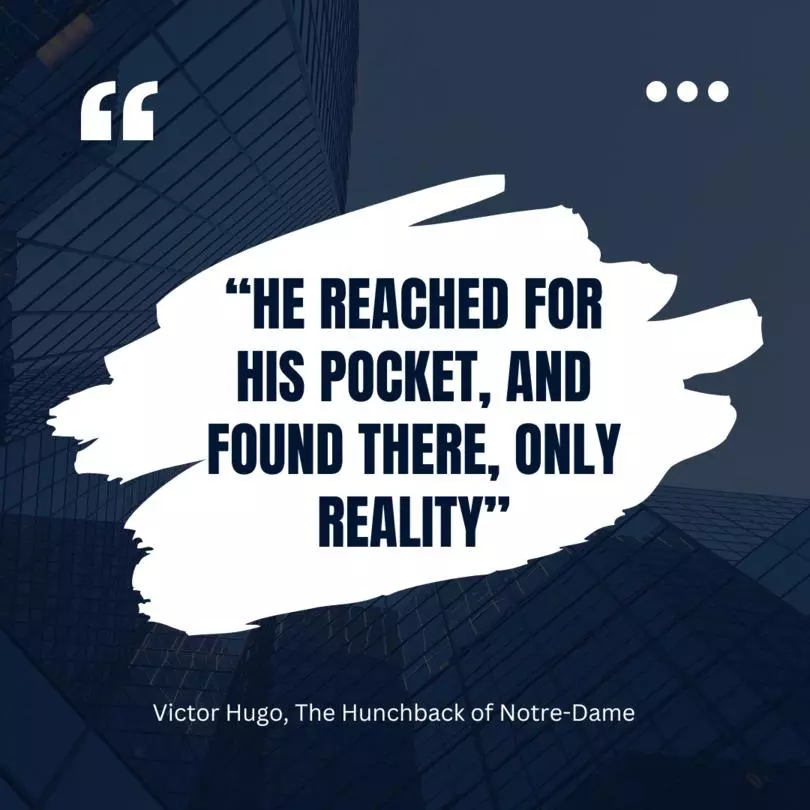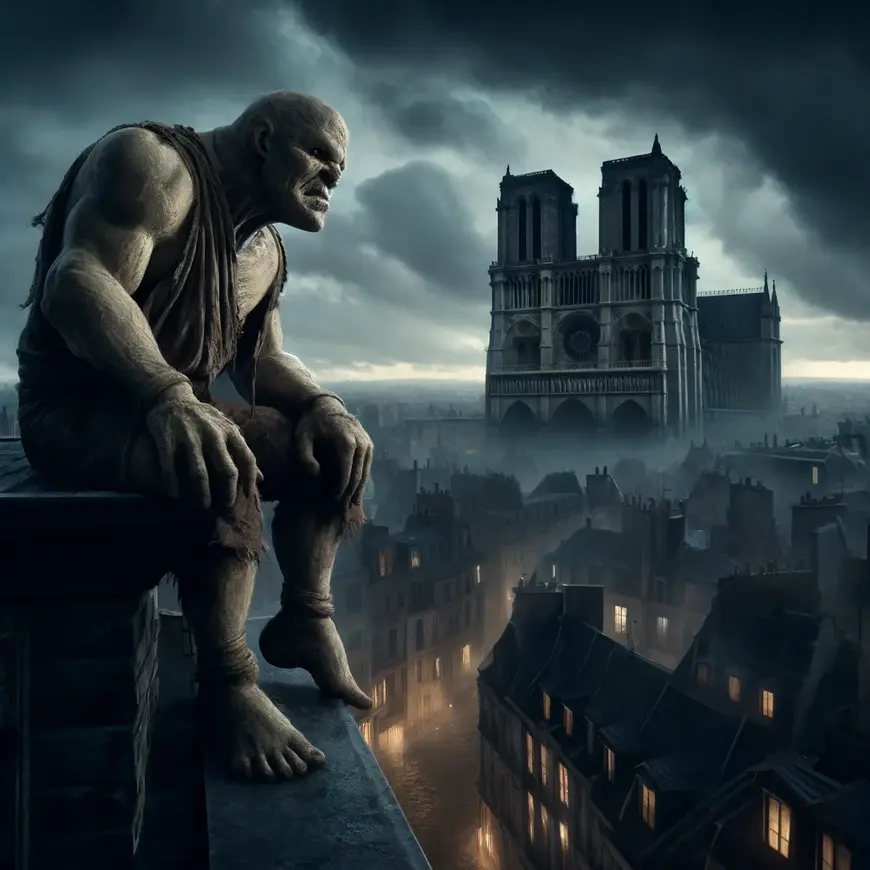A Tale of Love and Redemption – A Review of Victor Hugo’s “The Hunchback of Notre Dame”
Hugo’s Towering Masterpiece – Unraveling the Beauty and Darkness of “The Hunchback of Notre Dame“
In the world of classic literature that combines historical richness, complex characters, and a profound exploration of human nature, Victor Hugo’s “The Hunchback of Notre Dame” stands as a towering masterpiece that immerses readers in the vibrant tapestry of 15th-century Paris. With prose that oscillates between beauty and darkness, Hugo weaves a narrative that is at once a vivid portrayal of a bygone era and an exploration of timeless themes such as love, prejudice, and the human capacity for cruelty and compassion.
Unveiling the Majestic Paris: The World of “The Hunchback of Notre Dame”
Imagine a world where the grandeur of Paris’s architecture and the bustling streets of the city serve as a backdrop to a tale of love, obsession, and societal injustice. “The Hunchback of Notre Dame” transports readers to the heart of medieval Paris, where the imposing Cathedral of Notre Dame and the labyrinthine streets of the city become central to the unfolding drama. Hugo’s narrative traverses the realms of beauty, darkness, and the human spirit’s capacity for both love and cruelty.
The setting of Paris is not merely a stage; it’s a character in its own right, reflecting the contrasts between the city’s grandeur and its dark underbelly. The french writer’s prose paints a vivid picture of Paris, where the architecture, culture, and politics of the time come alive, serving as a backdrop to the struggles of the novel’s characters.

Characters in the Spotlight: A Symphony of Emotions
The heart of “The Hunchback of Notre Dame” lies within its characters, each representing a facet of the human experience and the complexities of the human soul. Quasimodo, the deformed bell ringer of Notre Dame, becomes a vessel for readers to explore themes of isolation, prejudice, and the transformative power of love. His journey from an outcast to a symbol of compassion and redemption mirrors the broader human capacity for change and growth.
Other characters, such as Esmeralda, Claude Frollo, and Phoebus, provide contrasting perspectives on themes of love, desire, and the consequences of societal prejudice. Hugo’s portrayal of these characters serves as a mirror to the complexities of human relationships, as well as the ethical dilemmas individuals face when confronted with their own desires and prejudices.
Themes of Love and Prejudice: Insights Explored
“Unraveling the tapestry of love and prejudice,” Hugo seems to say, as he delves into themes that resonate deeply with the human experience. The theme of love is central to the narrative, as characters like Quasimodo and Esmeralda grapple with the complexities of romantic attraction, devotion, and the pursuit of happiness. Hugo’s exploration of love prompts readers to reflect on the ways in which it can transcend societal boundaries and inspire acts of courage and sacrifice.
Prejudice is another prominent theme that surfaces throughout the narrative. Hugo’s portrayal of societal discrimination against Quasimodo, the Roma people, and others serves as a stark reminder of the human capacity for cruelty and injustice. The tension between prejudice and compassion creates a narrative that is both thought-provoking and deeply moving.
Prose as a Symphony of Contrasts: Hugo’s Writing Style
Victor Hugo’s writing style is a symphony of contrasts, a blend of lush descriptions and introspective musings that capture the grandeur and darkness of the human experience. His language is both evocative and reflective, creating an atmosphere that immerses readers in the emotional landscapes of the characters and the historical richness of the setting. Hugo’s prose carries a weight that conveys the complexities of human emotions and the grandeur of the narrative.
The novel’s structure is deliberate, with each chapter serving as a window into the lives and struggles of the characters. Hugo’s writing style reflects the contrasts that define the novel, from the beauty of Notre Dame to the dark streets of Paris, and from the heights of love and compassion to the depths of prejudice and cruelty.

Notable Quotes from “The Hunchback of Notre Dame” by Victor Hugo
- “The church of Notre-Dame at Paris is surely still a sublime and majestic edifice.”
- Explanation: This quote reflects Hugo’s deep admiration for the Notre-Dame Cathedral, which is central to the novel. The cathedral is not only a setting but also a character in its own right, symbolizing the grandeur and history of Paris.
- “When a man understands the art of seeing, he can trace the spirit of an age and the features of a king, even in a knocker.”
- Explanation: This quote underscores the theme of perception and understanding. Hugo suggests that even the smallest details of architecture and art can reveal deep insights into the culture and values of a society.
- “The spirit of a language is reflected in the spirit of its people.”
- Explanation: Hugo emphasizes the connection between language and identity. This quote suggests that the way people speak and write reflects their collective consciousness and cultural heritage.
- “Love is like a tree: it grows by itself, roots itself deeply in our being and continues to flourish over a heart in ruin.”
- Explanation: This metaphorical quote captures the transformative power of love, which can thrive even in adverse conditions. It speaks to the resilience and enduring nature of love, a central theme in the relationships depicted in the novel.
- “Nothing makes a man so adventurous as an empty pocket.”
- Explanation: This quote reflects the theme of poverty and survival. It suggests that desperation can drive people to take bold and risky actions, highlighting the struggles of the novel’s characters who are often pushed to their limits by circumstances.
Trivia Facts about “The Hunchback of Notre Dame”
- Publication Year: “The Hunchback of Notre Dame” was first published in 1831. The novel was a major success and helped establish Victor Hugo as one of France’s leading literary figures.
- Historical Preservation Impact: The novel played a significant role in the preservation of the Notre-Dame Cathedral. At the time of its publication, the cathedral was in a state of disrepair. Hugo’s vivid and romantic descriptions of the cathedral stirred public interest and ultimately led to restoration efforts, spearheaded by architect Eugène Viollet-le-Duc.
- Original Title: The original French title of the novel is “Notre-Dame de Paris,” which directly translates to “Our Lady of Paris.” The title emphasizes the importance of the cathedral as the central character of the story, rather than focusing solely on Quasimodo, the hunchback.
- Themes of Social Justice: Victor Hugo wrote “The Hunchback of Notre Dame” to highlight social issues such as injustice, class disparity, and the treatment of marginalized individuals. The novel explores these themes through the lives of its characters, particularly Quasimodo, Esmeralda, and Claude Frollo.
- Mixed Genre: The novel is a mix of historical fiction, gothic romance, and social commentary. Hugo masterfully blends these genres to create a story that is not only engaging but also deeply reflective of the socio-political climate of 15th-century Paris and Hugo’s own time.
Timeless Relevance: Today’s Reflections
While “The Hunchback of Notre Dame” is set in a specific historical context, its exploration of love, prejudice, and the complexities of the human spirit remains relevant in the modern world. In an era marked by discussions of inclusion, discrimination, and the enduring quest for love and acceptance, Hugo’s examination of these themes offers a timeless perspective.
The theme of prejudice and its consequences continues to resonate, as societies grapple with issues of discrimination, marginalization, and social justice. Hugo’s portrayal of the characters’ struggles serves as a reminder of the enduring human capacity for both cruelty and compassion.
Final Thoughts: A Monument of Literature
“The Hunchback of Notre Dame” is a monumental work of literature that invites readers to explore the depths of human emotions, societal injustice, and the enduring power of love and compassion. Victor Hugo’s narrative is a journey into the heart of medieval Paris, where the grandeur of the city’s architecture is matched only by the complexities of its inhabitants.
As readers immerse themselves in the world of “The Hunchback of Notre Dame,” they are reminded of the power of literature to transcend time and place, to illuminate the human condition in all its beauty and darkness. Hugo’s prose becomes a vessel through which readers can contemplate their own roles in combating prejudice, promoting compassion, and celebrating the enduring capacity for love in a world marked by both grandeur and cruelty. “The Hunchback of Notre Dame” is a testament to the enduring allure of Hugo’s insights and a reminder of the timeless relevance of its themes
More Reviews of Works by Victor Hugo
The Last Day of a Condemned Man
The Guillotine’s Shadow – A Review of Victor Hugo’s “The Last Day of a Condemned Man” In the realm of…
A Saga of Redemption and Resilience – A Review of “Les Misérables” by Victor Hugo In the realm of literature…

